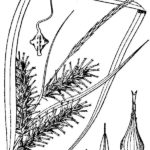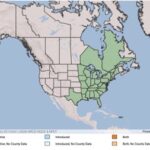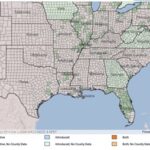Carex lupuliformis
Illustration: USDA-NRCS PLANTS Database / Britton, N.L., and A. Brown. 1913. An illustrated flora of the northern United States, Canada and the British Possessions. 3 vols. Charles Scribner’s Sons, New York. Vol. 1: 440.
What is False Hop Sedge?
Physical Characteristics
Leaves:
- Up to 0.5 inches wide
- Sheaths reddish-purple in color
Flowers:
Fruit:
- Large
- Green
- Up to 0.5 inches long
- Rounded
Seed:
- 3 sided
- Shaped like a rhombus
Stem:
- Grow in clusters
- 1-4 feet tall
Where Does it Grow?
USDA, NRCS. The PLANTS Database (http://plants.usda.gov). National Plant Data Team, Greensboro, NC 27401-4901 USA.
False hop sedge can be found in swamps, riverbanks, ditches, and wet clearings.
Pros and Cons of False Hop Sedge
Sedges are considered good wildlife plants. Sedges are grazed by muskrats, nutria, and rabbits; while the seeds are consumed by waterfowl and small birds. Submerged portions of all aquatic plants provide habitats for many micro and macro invertebrates. These invertebrates in turn are used as food by fish and other wildlife species (e.g. amphibians, reptiles, ducks, etc.). After aquatic plants die, their decomposition by bacteria and fungi provides food (called “detritus”) for many aquatic invertebrates.


